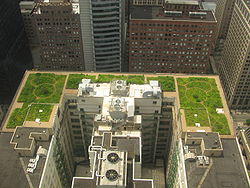What is Green Infrastructure?
What Is Green Infrastructure?
 Green infrastructure, also sometimes referred to as GI, is an innovative approach to managing stormwater runoff. It utilizes natural processes, such as evapotranspiration and infiltration, to slow down stormwater to from overwhelming SW systems and polluting waterways.
Green infrastructure, also sometimes referred to as GI, is an innovative approach to managing stormwater runoff. It utilizes natural processes, such as evapotranspiration and infiltration, to slow down stormwater to from overwhelming SW systems and polluting waterways.
Green infrastructure also harnesses the power of these natural processes to clean and sometimes reuse stormwater. There are several types of green infrastructure, but the overall goal is to replicate natural environments and make it possible to deal with rainwater and reduce urban heat as naturally as possible.
Green infrastructure includes things like permeable pavements, bioretention and roof-top collection processes. Porous asphalt, pervious concrete, rain gardens, bioswales and tree boxes can all be used in green infrastructure processes as a means of allowing water to be absorbed naturally into the ground. Green roofs provide multi options for collecting or reusing rainwater; providing biodiversity, thermal insulation and reducing runoff. Man-made wetlands are also common solutions for dealing with stormwater in urban and suburban areas.
When urban areas are predominantly hard grey surfaces it seals off a connection to the deep soil landscape. The consequences have social, environmental and economical impacts. GI provides a re-balancing by incorporating nature back into the urban fabric.
Plants Make It Possible..




